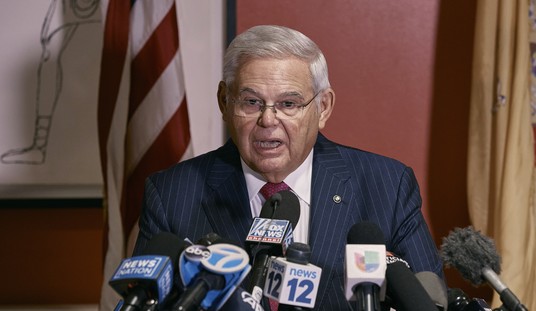The European Union’s flagship cap-and-trade carbon credit trading system is plagued by massive fraud and is effectively under the control of organized crime, according to a December 9 statement issued by European police. Europol, an EU-wide criminal intelligence agency similar to the U.S. Federal Bureau of Investigation, says bogus trading at the EU’s Emission Trading Scheme (ETS) has exceeded €5 billion (U.S.$7 billion) over the past 18 months alone. Europol says that in some EU countries, up to 90 percent of the entire market volume is fraudulent.
News of the scale of the fraud, which comes just weeks after hundreds of hacked emails suggest that scientists have manipulated and exaggerated global warming data, will cast further doubt over the effectiveness of carbon trading as a way to curb emissions. It may also provide fresh ammunition to critics of the Obama administration’s plans to implement a cap-and-trade system in the United States that is largely based on the European model.
Europol says the fraud was first suspected in late 2008, when the volume of trades in European Unit Allowances (EUA), the carbon credits that companies in EU countries buy to offset their greenhouse gas output, mysteriously spiked.
In the European Union, caps are placed on the total amount of carbon dioxide that may be emitted. Companies that pollute more than their allotted share, such as steel plants, power plants, cement-makers, and other big industries, are required to buy carbon credits from those companies that do not exceed their allotted share, in order to keep the total output below the prescribed cap.
In the latest scam (which is a mutation of the EU’s notorious value-added tax carousel fraud), criminals open a carbon trading account on one of six recognized European carbon markets, in the name of a newly registered company. They then buy tax-free carbon credits in another country, transfer those credits into their account, and then sell them to a carbon broker in yet another country. The fraudsters collect VAT (which varies from between 15 to 25 percent depending on the EU country) on each transaction, but never pay the VAT monies to any European tax agency. The company and its owners vanish before tax authorities realize they are owed large amounts of VAT.
The carousel tax fraud repeats itself over and over, as the criminals set up new companies, using different front men, to collect more and more VAT. Organized crime rings are thought to have dozens or even hundreds of companies whose real owners are difficult if not impossible to trace.
VAT fraud is endemic in the EU, which has 27 different national tax systems and no effective cross-border coordinating mechanism. Criminals are able to defraud the European VAT system largely because goods (especially carbon credits, which are invisible and highly tradable) moved from one EU country to another do not attract VAT at the point of entry. Once the goods are sold to a wholesaler or retailer, VAT is charged. The fraudsters then purloin the tax revenues rather than passing them on to national tax authorities.
In August 2009, British police broke up an organized crime ring suspected of making $60 million by trading carbon credits marked-up with VAT that was never paid to the British treasury. EU officials say that overall VAT fraud may be costing European governments up to €50 billion per year, although some studies suggest that there is a 10 percent gap between theoretical and actual VAT receipts in most EU countries, with overall tax fraud costing EU governments up to €250 billion per year.
The practical implication for the debate over climate change is that the EU’s EST is not nearly as successful as European proponents claim.
But VAT fraud is not the only problem undermining the credibility of the EU’s vaunted cap-and-trade system. Some leading European companies are gaming the ETS by lobbying for the right to pollute for free. Indeed, a number of corporations are effectively extorting EU bureaucrats in Brussels into giving them hundreds of millions of euros in free carbon credits to keep those companies from moving European jobs to developing countries.
For example, European steelmakers have threatened to leave the EU for India, eliminating the jobs of up to 90,000 European workers in the process, unless the EU grants the steelmakers free carbon credits worth hundreds of millions of euros. As a result, ArcelorMittal, the world’s largest steel company, has gained windfall profits in the form of carbon credits worth nearly €1 billion, for which it paid nothing. By 2012, ArcelorMittal will have accumulated surplus permits for 80 million tons of carbon dioxide, which is equivalent to the pollution generated annually by all of Denmark.
ArcelorMittal is now free to sell its surplus carbon credits on the market or to hoard them for future use. If it hangs on to them, the company will be able to avoid cutting greenhouse gas emissions possibly for decades, effectively undermining the ETS. According to Sandbag, a British NGO that campaigns to improve carbon trading, the EU’s ETS has been turned into “a system for generating free subsidies.”
Even Rajendra K Pachauri, who has been the chairman of the UN Intergovernmental Panel on Climate Change (IPCC) since 2002, has been suspected of having a role in gaming the EU system to profit from the trade in carbon credits. The Mumbai-based Tata Group, an Indian multinational conglomerate which has business ties to Pachauri (who accepted the Nobel Peace Price on behalf of the IPCC (which it shared with Al Gore in 2007) for its work on global warming), may stand to make several hundred million euros in EU carbon credits simply by closing a steel production facility in Britain.
The EU’s ETS was set up by European bureaucrats in 2005 in order to enable the EU to meet its targets for cutting greenhouse gases under the Kyoto Protocol. It is now by far the largest multi-national cap-and-trade scheme in the world, comprising nearly 75 percent of the value of the global carbon market. The idea behind the ETS is that it reduces carbon dioxide emissions and creates incentives for climate-friendly innovations and so moves European industry onto a low carbon path. Yet, despite the claims, the ETS has failed to achieve its objectives.
Indeed, critics say the only thing the ETS has actually accomplished has been to provide the EU’s biggest polluters with windfall profits, and to increase utility bills for ordinary European citizens. Some analysts believe the ETS is now responsible for between 15 to 20 percent of European power prices, which spiked dramatically in all EU countries after the ETS began operating.
Of course, the ETS has also greatly enhanced the power of unelected bureaucrats in Brussels, who seem bound and determined to redistribute global wealth. In the words of Christopher Booker of the Telegraph: “Forget Big Oil: the new world power is Big Carbon. Truly it has been a miracle of our time that they have managed to transform carbon dioxide, a gas upon which all life on earth depends, into a ‘pollutant,’ worth more than diamonds, let alone oil. And many of those now gathered in Copenhagen are making a great deal of money out of it.”









Join the conversation as a VIP Member